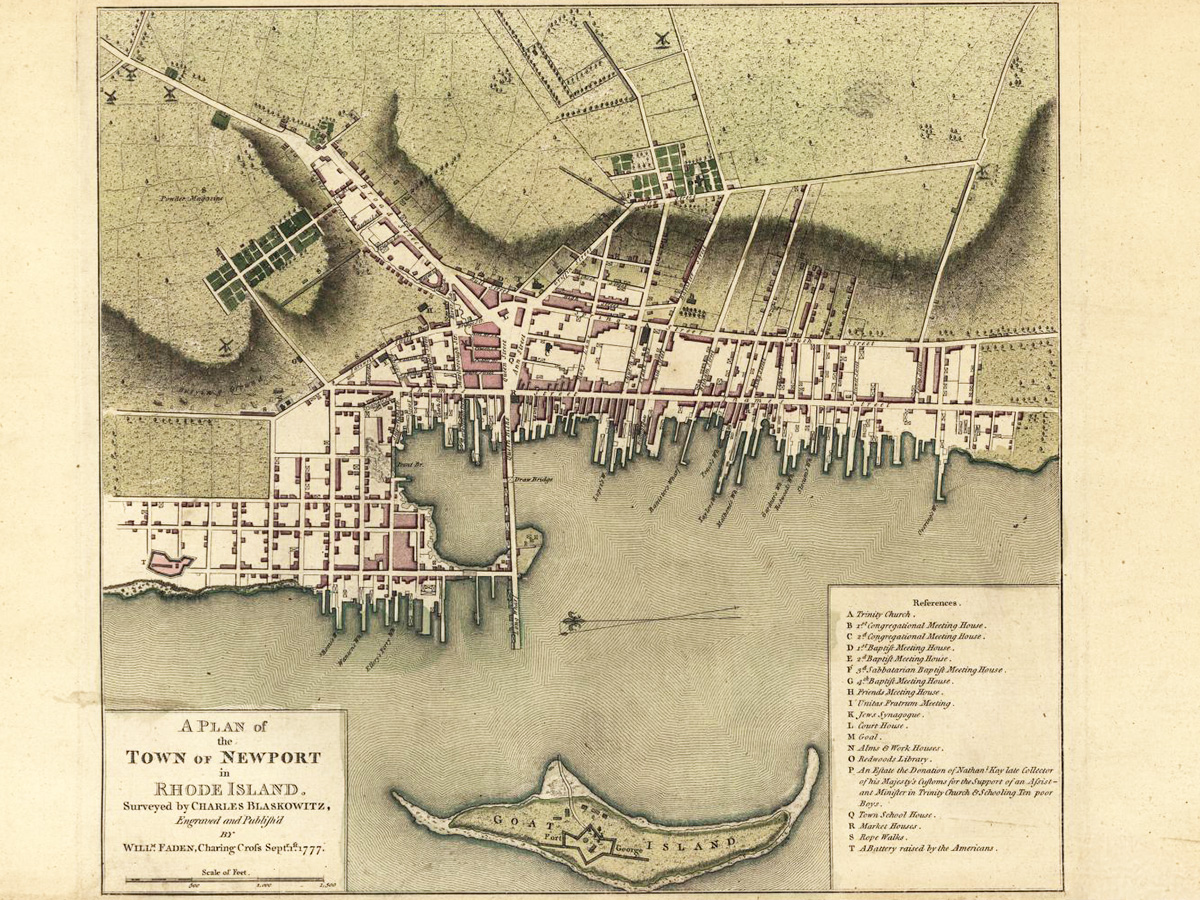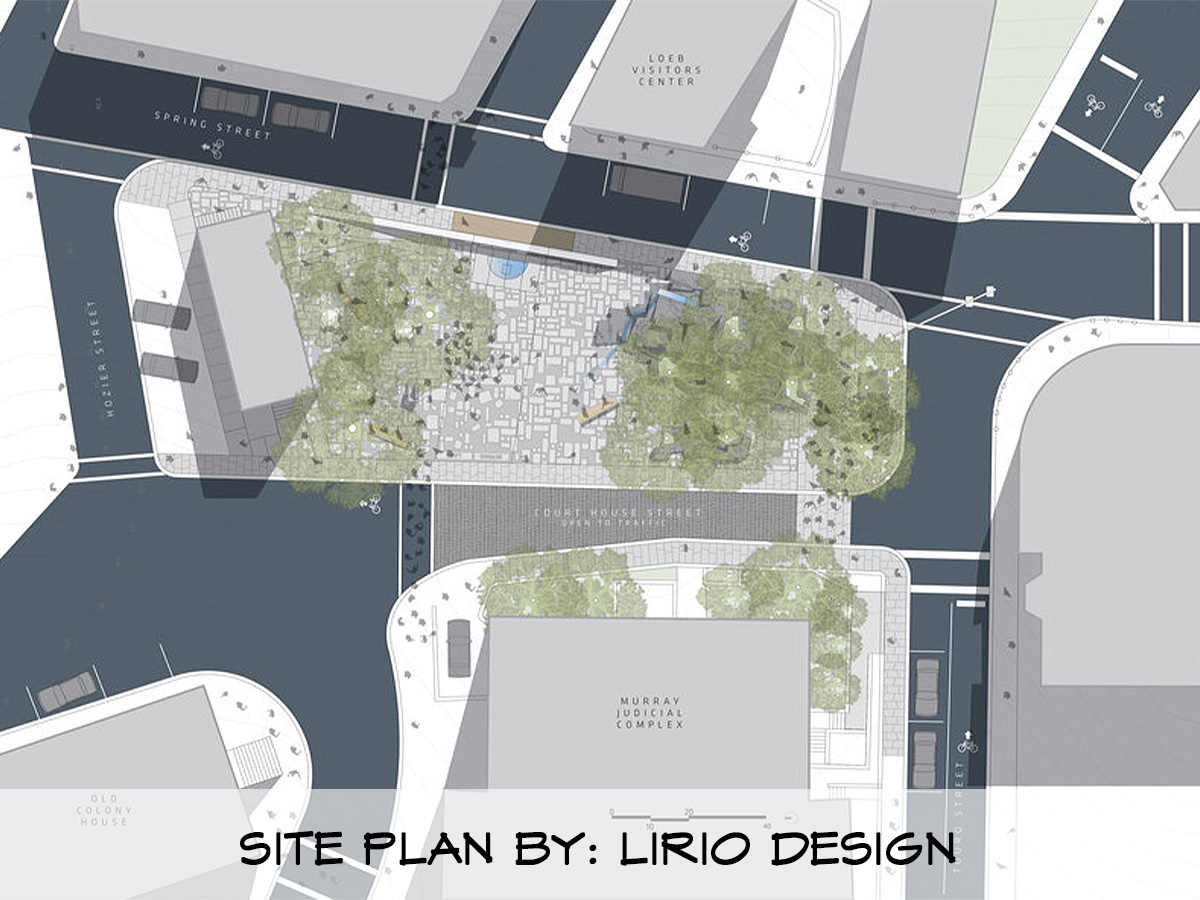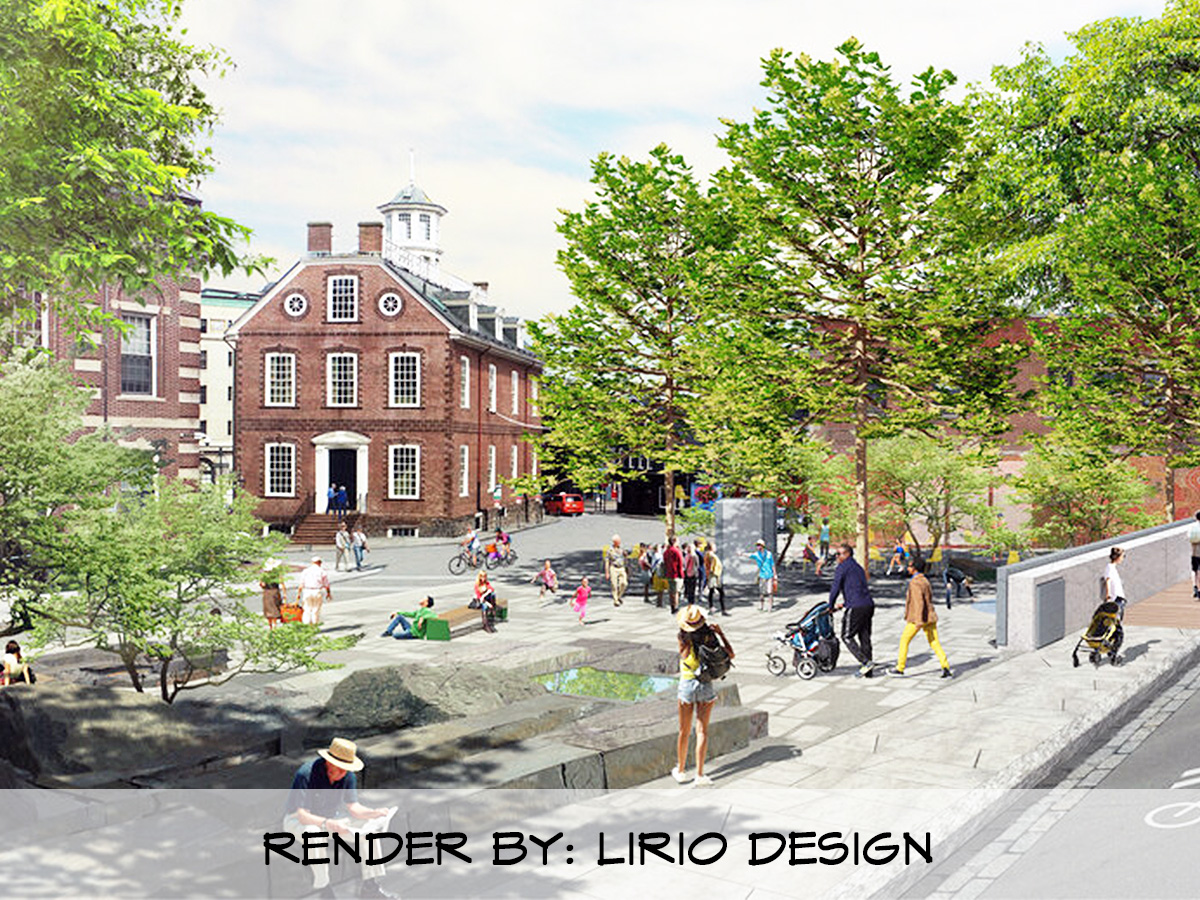Aerial Render of Spring Park (LIRIO Design Render)
The settlement of the colony of Newport began in 1639 with the establishment of the Newport Charter. The location of the settlement was defined by the location of the freshwater spring that made the settlement and habitation of this location possible. It is this same spring that gave the name to Spring Street.
Soon after, in 1663, Dr. John Clarke returned from England with the Rhode Island Royal Charter. This document, perhaps the first of its kind, guaranteed the inhabitants of this new community being built on the shores of the Narragansett Bay the guarantee of liberty of religion and freedom from future control by the monarchs of England.

Portrait of John Clarke
In its early days the spring was central to the survival and prosperity of Newport. On one side was the well-protected salt water harbor which provided access to other trading partners by sea. On the other was the spring which provided the lifeblood of the community: safe, drinkable water. Without both Newport would not have grown as quickly as it did, becoming the fifth largest city in the American colonies by 1776, behind only New York, Boston, Philadelphia and Charlestown in permanent population.

Blaskowitz Map of 1777, Newport, RI
Over the years the importance of the spring slowly wanned. People dug their own wells but continued to water their horses and cattle at the spring. Wagon shops and blacksmith shops to shoe horses were established nearby. In the early twentieth century, with the replacement of horses and carriage by automobile, these shops became gas stations and auto repair shops and the spring was buried under asphalt.
In 2012 when the owner of the gas station that was sitting on the site of the original spring announced his intention to sell the property, Lily Dick and other community leaders, who had helped guide the restoration of the nearby Washington Square, shifted into action to try to acquire the site and to turn it into a public space. Today twelve years later, their vision is of a public space celebrating the founding of Newport as a place of religious tolerance has finally come to fruition. On June 1, 2024 the park was opened to the public as part of the celebrating of gifting the parcel to the city as a new privately financed park.

Plan of Spring Park (LIRIO Design Site Plan)
The park was designed by LIRIO, a landscape and urban planning studio that is a collaboration of Ron Henderson, Tanya Kelly and others. The hard work and fundraising of the Newport Spring Committee cannot be neglected in the success of this effort. With each twist and turn of the development process, this group had to guide the path of the project through obstacles and raise substantial funds for the acquisition, remediation, study of traffic, design and eventual construction of the park.

Render of Spring Park (LIRIO Design Render)
This new park will hopefully become a place where Newport’s long history of religious freedom can be remembered, taught and celebrated. It is also hoped that it will be a great, gathering space and safe gateway to the Touro Synagogue (America’s oldest existing Synagogue built in 1763), which sits just to the east of the park. This extraordinary work of urban planning and landscape architecture is an extraordinary gift to the city is a mark of how much people respect the city’s rich past and wish to celebrate it with beautiful physical places.

Opening Speech at Spring Park (Newport, RI)
This new park will hopefully become a place where Newport’s long history of religious freedom can be remembered, taught, and celebrated. It is also hoped that it will be a great gathering space and safe gateway to the Touro Synagogue (America’s oldest existing Synagogue built in 1763), which sits just to the east of the park. This new park is an extraordinary gift to the city and is a mark of how much people respect the city’s rich past and wish to celebrate it with physical places.
Ross Sinclair Cann, AIA, LEED AP, is an historian, educator and practicing architect living and working in Newport for A4 Architecture. He was a member of the Washington Square Advisory Commission and was a member of the Newport Spring Advisory. He holds degrees with honor in Architecture and Architectural History from Yale, Cambridge and Columbia Universities.
